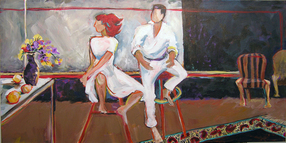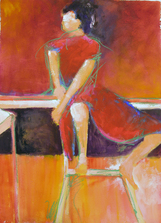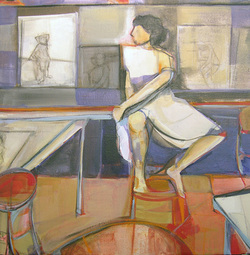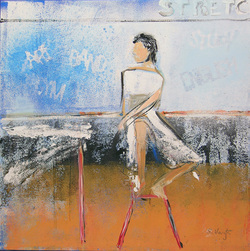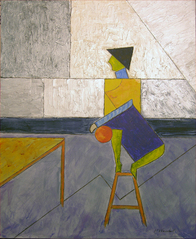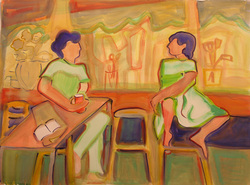Woman On A Stool (1965)
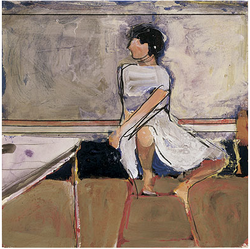
Richard Diebenkorn, American,1922-1993 Gouache and Pencil on Paper, 12.6 x 12.1 inches, in Private Collection
"I'm really a traditional painter, not avant-garde at all. I wanted to follow a tradition and extend it." The tradition that Richard Diebenkorn admired brought a new and unique sensibility to Abstract Expressionism. In his version, images allude to his experiences and settings of travel, his homes in California and New Mexico and influences from both European and American modernists. Woman on Stool was part of a figurative series where Diebenkorn’s drawing and painting were a simultaneous process. The image began as a study from life, but was reworked multiple times to become a composite of the original figure as well as others. Influenced by Matisse and Cezanne, Diebenkorn utilizes flat areas of color to create an ambiguous background that surrounds the figure to highlight the female form. Gestural lines provide the figure, in her simplicity, a distinct character and personality. The study of the human figure was a subject Diebenkorn revisited multiple times during his career.
"I'm really a traditional painter, not avant-garde at all. I wanted to follow a tradition and extend it." The tradition that Richard Diebenkorn admired brought a new and unique sensibility to Abstract Expressionism. In his version, images allude to his experiences and settings of travel, his homes in California and New Mexico and influences from both European and American modernists. Woman on Stool was part of a figurative series where Diebenkorn’s drawing and painting were a simultaneous process. The image began as a study from life, but was reworked multiple times to become a composite of the original figure as well as others. Influenced by Matisse and Cezanne, Diebenkorn utilizes flat areas of color to create an ambiguous background that surrounds the figure to highlight the female form. Gestural lines provide the figure, in her simplicity, a distinct character and personality. The study of the human figure was a subject Diebenkorn revisited multiple times during his career.
